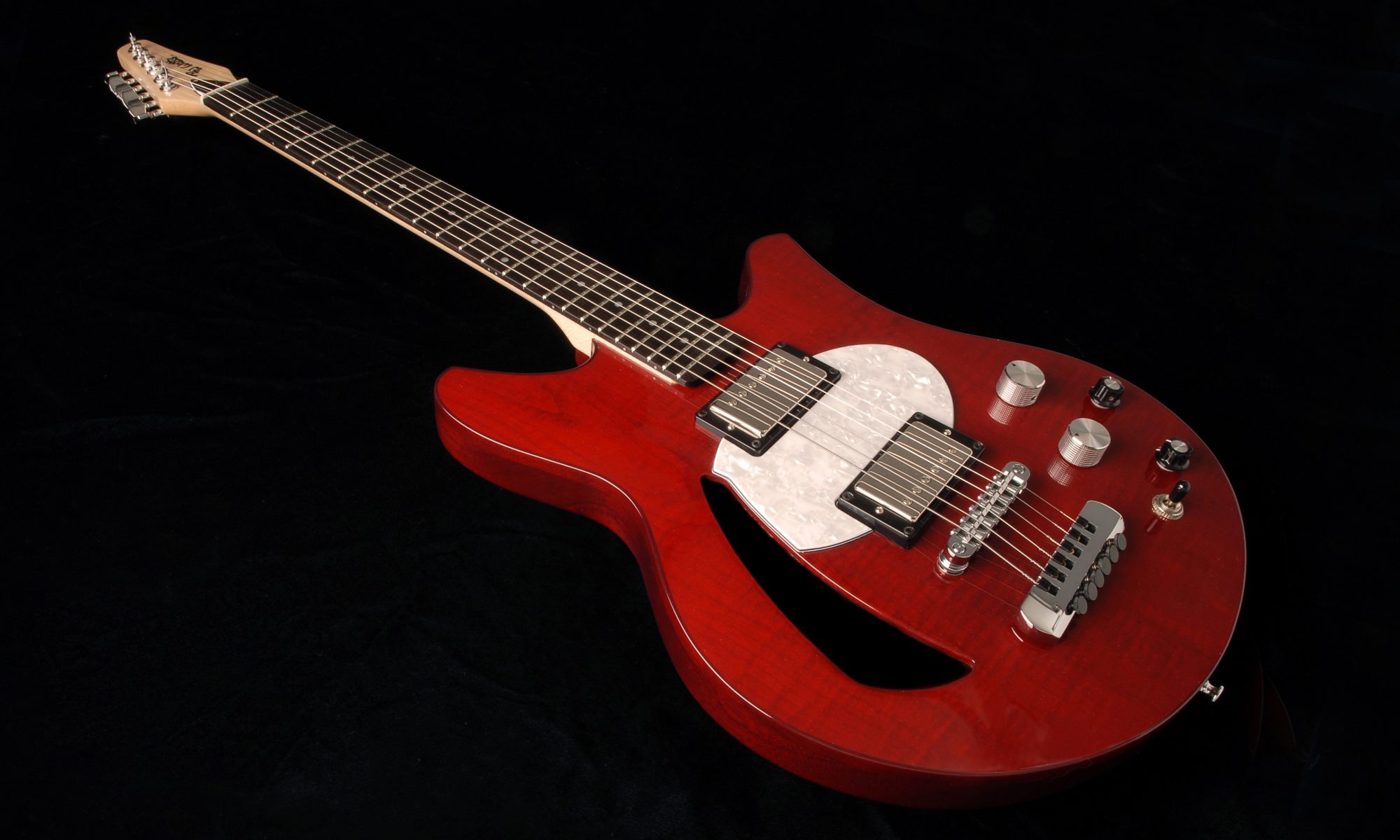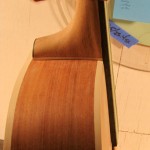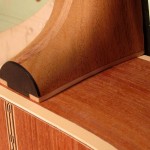Details.
Ok. So one of the most important things I’ve learned about woodworking over the many years, aside from the myriad ways of removing splinters, is that there is always a way to fix a problem, and when that problem happens, what gets offered up is the opportunity for a … detail.
A little background. The heel of the neck is supposed to meet the body of the guitar such that the fretboard (the thin black piece of wood in the left picture) lies flat on the top of the guitar. A 90° joint intersection seems like a good idea, except the top of the guitar (as well as the bottom) is slightly domed. If the top is like a very large radius basketball where you slice off the very top, and that sliced off top becomes the top of the guitar, then everything beyond the polar top point of that dome (which lies somewhere aft of the soundhole) is essentially running downhill towards all sides of the guitar – if just ever so slightly. The doming of the top is used instead of a flat top to allow for a slight expansion and contraction with atmospheric/humidity changes that will happen with seasonal change. This helps keep the top from developing a crack. This means that the neck/body joint is actually going to be a little more than a 90° connection – in fact about 1½° more than 90°. When I made the original cut on the neck, I was closer to 2° over. That had the unfortunate effect of raising the fretboard up and off the surface of the guitar top. Rats!
That meant I had to go back and recut the neck joint to accommodate that ½° miscalculation (you wouldn’t think a ½° would make that big a difference, but it does), all the while keeping a tight joint connection. Unfortunately, removing more wood from the neck to get the right angle meant that it would also make the neck connect to the body at the wrong spot – i.e. the neck is supposed to join the body at the 14th fret on the fretboard, and removing wood to get the right connection angle would have the joint happen at like the 13¾ fret mark, were there such a thing. I could have let it slide, and make further adjustments as necessary down the road, but this is what years of woodworking has taught me – there is now an opportunity for a detail. So when you screw up and you need to make that correction, the detail is there to solve the problem, but also to call attention to itself – to make it look purposeful. Like it was planned. Hence, the contrasting white maple strip backing up the mahogany at the point where the neck heel joins the guitar body – as seen in the right picture. I planned this all along! That’s my story, and I’m sticking to it.


